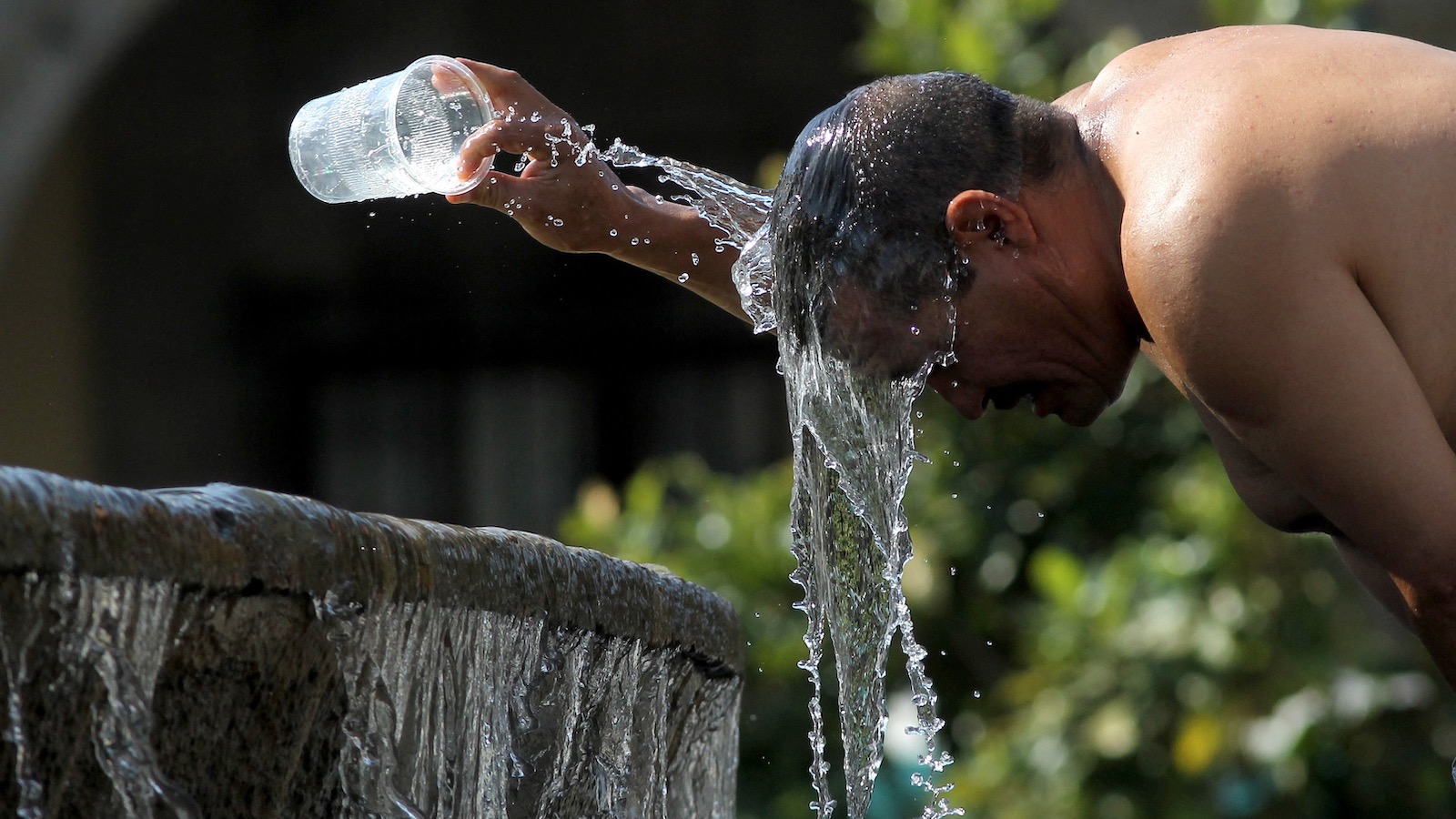This story is part of Record High, a Grist series examining extreme heat and its impact on how — and where — we live.
Today marks the first day of summer, and a stubborn heat dome parked over Mexico has much of that country and the Southern United States sweltering in brutal heat and coping with storms and other impacts.
Heat indices — a measure of how temperature and humidity feels on the body — beneath that dome topped triple digits, with the heat and related problems killing at least nine people since Sunday. Outages sparked by severe storms and rising demand for electricity in Texas, Oklahoma, Louisiana, and Mississippi left more than a quarter of a million people without power.
The heat dome is centered on north-central Mexico, where records are falling in the face of heat indices reaching 120 degrees. In Mexico City and the surrounding region, where it’s typically in the 70s this time of year, some 22 million people are sweating it out in temperatures topping 90 degrees. The impact has been especially hard on construction workers and others who must be outdoors in a toxic brew of heat, humidity, and smog. Eight people have died, and government health officials are urging people to take precautions as temperatures exceed 86 degrees in each of the nation’s 32 states.
Meteorologists expect the pattern to remain for 10 to 15 days, affecting 25 million people in the Southern United States. Looking beyond the South, a huge swath of North America is feeling the repercussions of the unusually high heat, with massive storms and outages. All of this is happening in conjunction with a marine heatwave, which experts have linked to El Nino — essentially, the supercharged heating of the oceans that is causing unusually high land temperatures and increased energy in the atmosphere. Experts warn that the pattern is taking us into potentially record-shattering weather, with temperatures soaring above 100 degrees earlier than usual.
Meanwhile, a combination of heat and strong winds have torn across the Gulf Coast and into the southern Plains. In Texas, Oklahoma, Louisiana, and Mississippi, over 280,000 people remained without power as of Tuesday. In Mississippi, a destructive EF-3 tornado with sustained winds of 150 mph tore through Mississippi on Sunday, killing at least one person.
In Tulsa, Oklahoma, winds topping 100 mph uprooted trees and downed power lines, prompting the city’s highest-ever wind advisory. As heat indices hit the 90s, crews were scrambling to repair more than 700 damaged utility poles and wires that left 165,000 people without power. On Tuesday, Governor Kevin Stitt, who is currently out of the country, called on Senate President Pro Tem Greg Treat to sign an executive order declaring a state of emergency in 10 counties. Tulsa officials warn that power may not be restored until Saturday; in the interim, temperatures may climb as high as 106.
In Texas, the extreme temperatures came shortly after Governor Greg Abbott signed a sweeping labor bill that, among other things, eliminated construction workers’ right to regular water and rest breaks.
During an extreme heat event, experts recommend limiting outdoor activity and venturing out only during cooler evening hours. Staying hydrated is essential; the human body may need as much as three quarts of water per day, according to the Red Cross. Staying cool inside means keeping curtains drawn, using window reflectors to keep heat outside, and turning on fans and air conditioners.
Of course, such efforts are difficult with interruptions to power. Multiple major cities in the affected area, particularly the outage-impacted parts of Tulsa and Houston, are offering cooling centers in public libraries and community centers. In Tulsa, the mayor reported one person died when their respirator lost power.
The heat is expected to continue, with little relief before the weekend at the earliest. “Overnight lows at most get into the upper 70s,” said Bob Oravec, the lead forecaster of the National Weather Service. “So there’s really not any good opportunity to cool off.”



